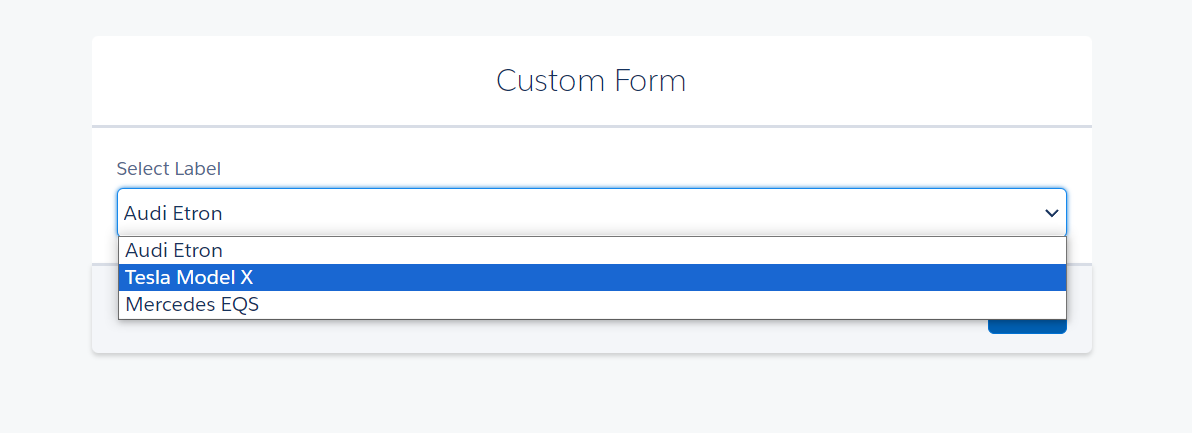Designing Screens - Working with Pick List
The Select Block component or <select> element is often used within screen input to allow users to choose from a list of options. It is also called as “Pick List”. It can contains one or more <option> elements, each representing an item in the list. This input method is suitable for situations where there's a limited and predefined set of options ensuring that the user selects a valid choice from that set.
Select lists are favored over radio buttons in HTML forms for single-option selection from a larger set of choices, especially when space efficiency is crucial. They provide a compact and organized presentation, taking up less screen space and maintaining a clean appearance. Select lists are particularly useful when dealing with a substantial number of options and when a default or placeholder option is needed to prompt user interaction. Their ease of styling and customization further enhances their versatility, making them a preferred choice for achieving a consistent and visually appealing form design.
Insert Pick List or Select Block to Screen
After clicking on Edit Screen or creating a new screen (or form). To add pick list inside the container:
Put cursor onto where the Pick List should be added
Click on
</> Select Blockon the left sidebarA pick list with 3 options will appear inside the container.
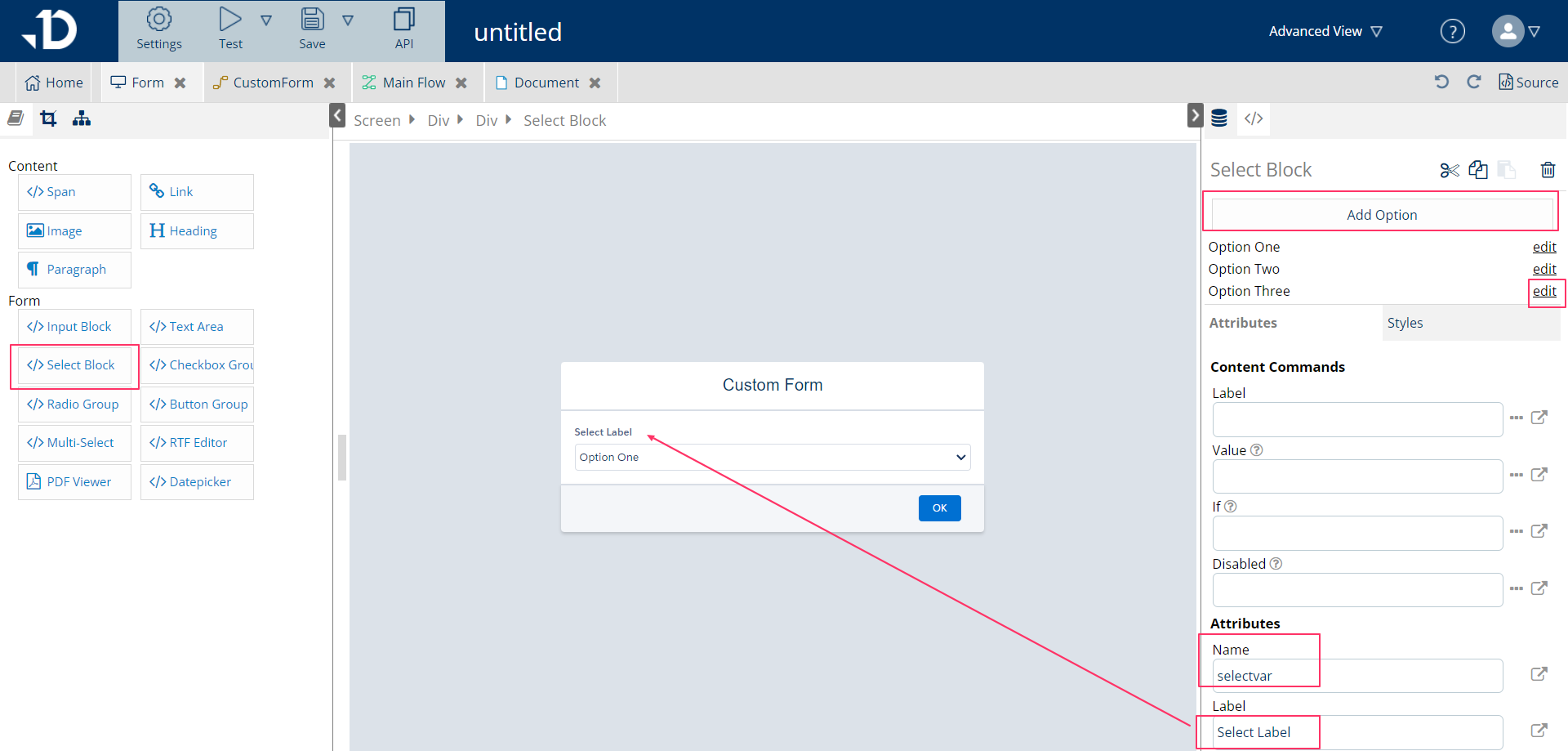
Setup Select Block
Select Block element
On the Select Block element, it’s possible to:
Add more options by clicking on Add Option button
Modify option by clicking edit of that option
Modify attributes like Name and Label to explain what the pick-list is about
Name: variable name of that Select Block. After setting a variable, the value of the variable will depends on the value of the option, whichever option have been chosen.
Label: input content for instruction or label the Select Block, to guide users what to choose here
Modifying option list can be done one by one, clicking on edit of that option. Then <option> element is selected.
Option element
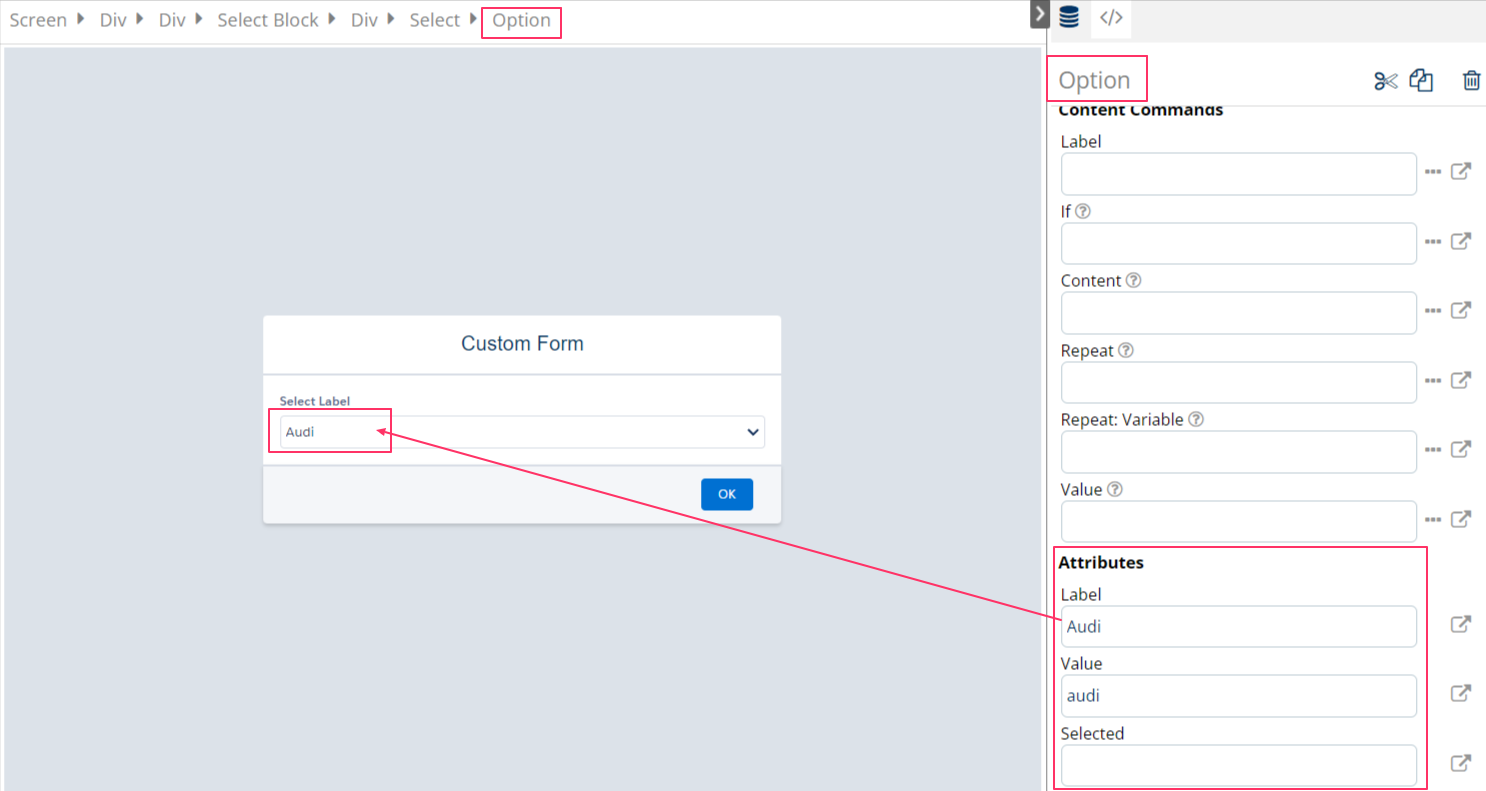
Label: display name of the value and reflect instantly on screen for users to see
Value: a short and memorable text to use later in the flow, if the option is selected by users, it will be understood that “selectVar=audi”. This is case-sensitive.
Selected: can be pre-defined with "true" or "false". If true, this Select Block will automatically select ‘Audi’
Adding/removing listed options:
Adding additional options can be done on the Select Block element from the breadcrumb > Click on 'Add option' on the top of the right pane
Removing options can be done by: select that Option element using edit > Click on the trash can icon on the top of the right pane.
Extensive use cases of Select Block
Populate dynamic content to Option:
As an example, if the template contains a collection of items, for example, list of optional Opportunity Product Items retrieved with relatedList called ‘cars’, as below:
List of items (cars) | Name | Id | Optional__c |
|---|---|---|---|
Audi | Audi Etron | 00076CARXXXXXXXXX1 | true |
Tesla | Tesla Model X | 00076CARXXXXXXXXX2 | true |
Mercedes | Mercedes EQS | 00076CARXXXXXXXXX3 | true |
Follow the instructions described in 'Set up Select Block' section to set up a pick list.
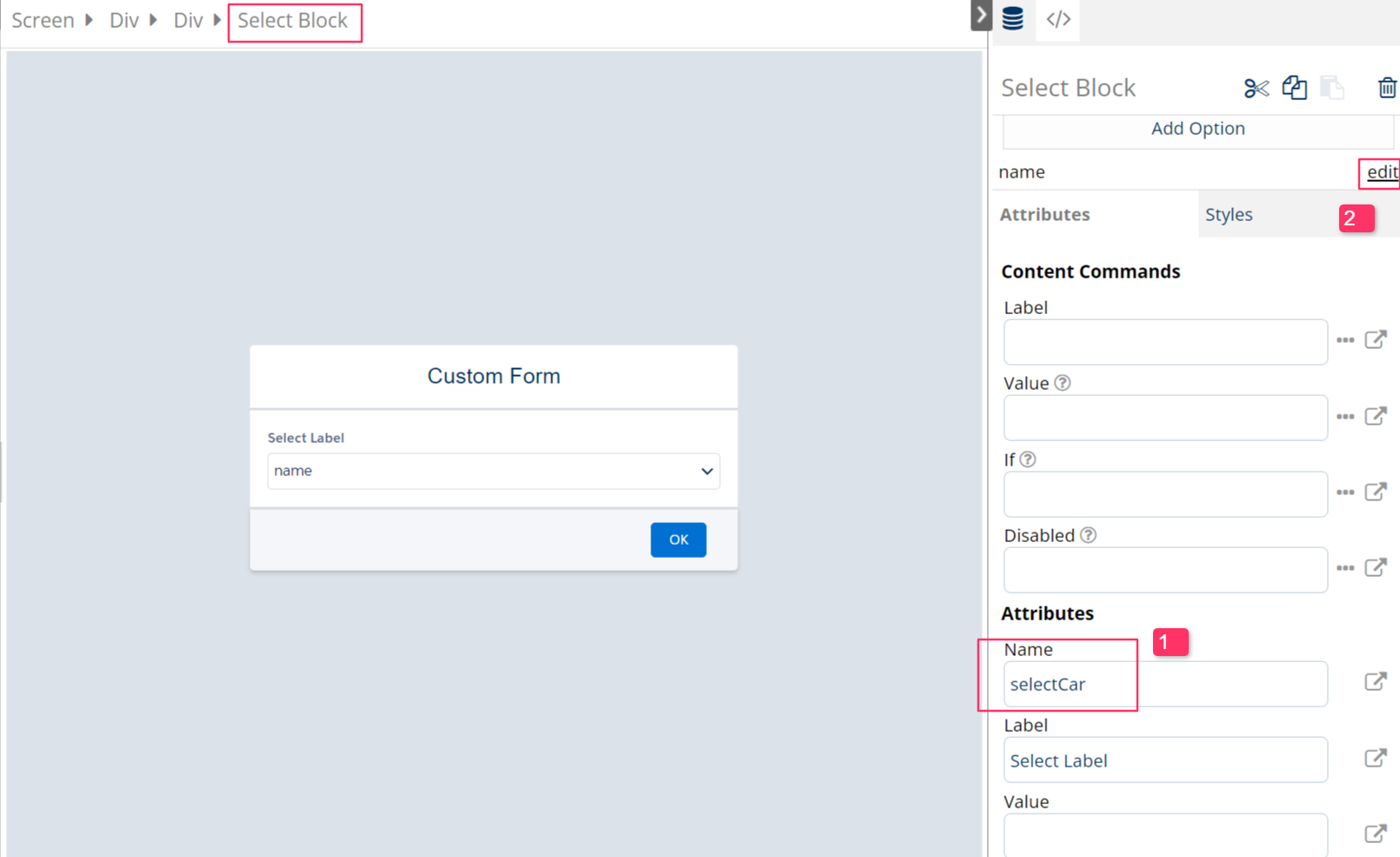
Click on Edit of an Option to modify its attribute
To populate the above selections to the screen, Content Commands of the
<option>element are used
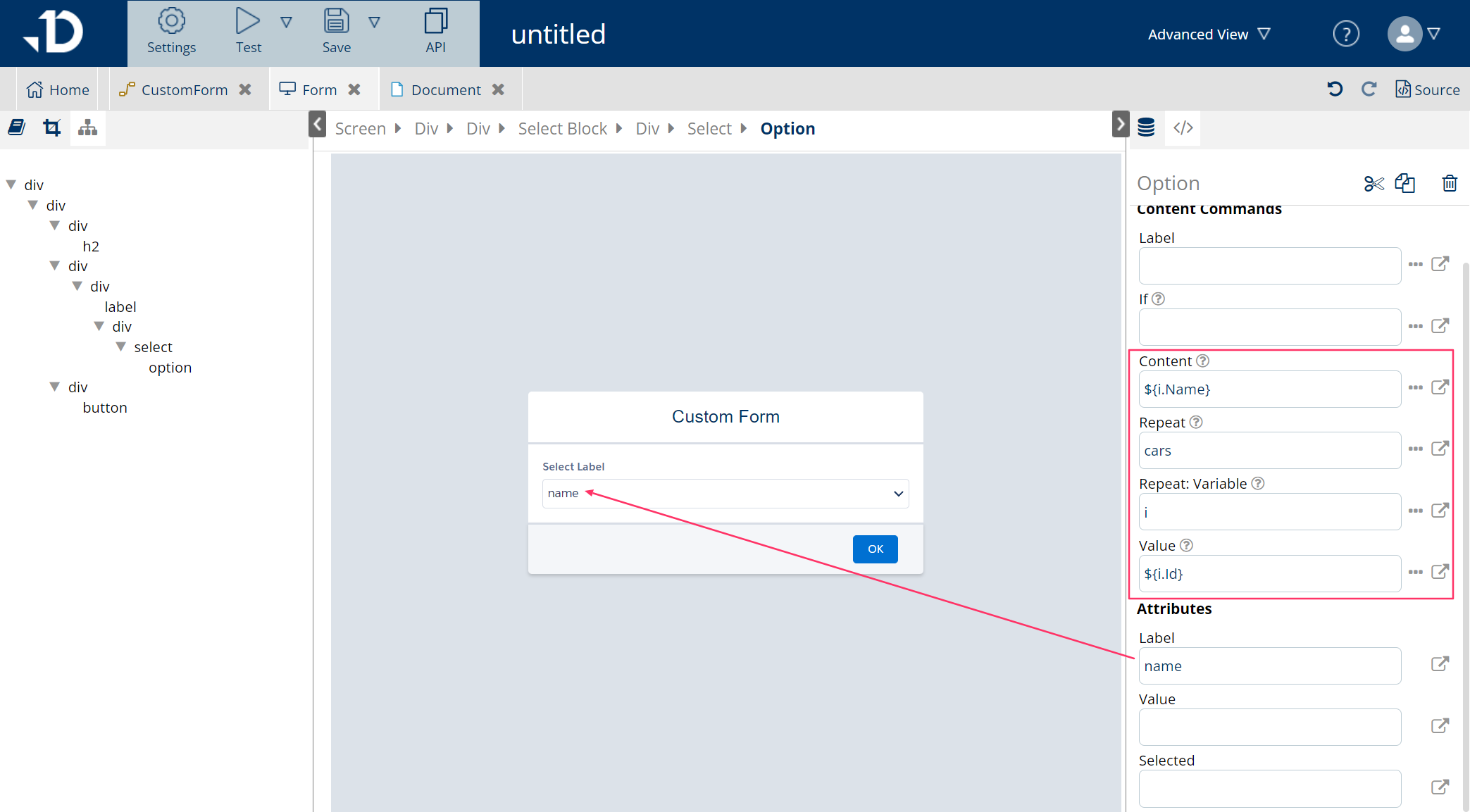
If Content attribute is used, it will overwrite the Label attribute below with dynamic content
Enter the collection name ‘cars’ in the Repeat attribute
Give Repeat:Variable any name, for example 'i' in this case
Provide dynamic content in Value attribute to populate the value of SelectBlock after users have selected it. For example, if users select ‘
Tesla Model X' in the screen, the template will resolveselectCar=00076CARXXXXXXXXX2
Test run the template will show the below screens
